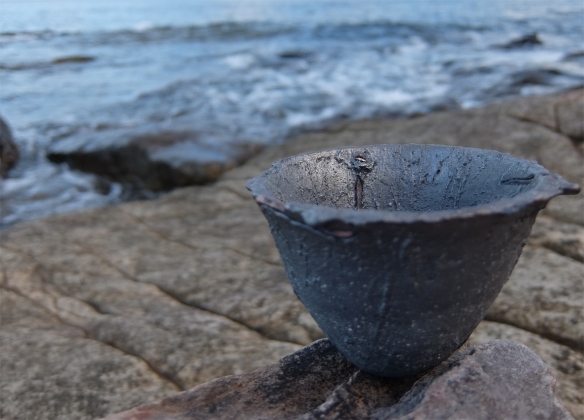
The day dawned bright and by lunchtime the mould was finally finished; Eden had mended the furnace and the ‘bull ladle’ was also fixed; the fork lift was in place to take the weight of the ladle; Michael had cracked the scrap iron (thanks Michael) and weighed the bags of coke and iron. Eden must have laid the bed of coke in the furnace when I was working on the mould indoors; the air blowers and gas tanks were in place. It was decided by the tech team to go ahead with the pour.
The furnace was lit and the air blower turned on to force the temperature up to melting point; the gas blower was turned on to the ‘bull ladle’ to heat it up ready to receive the molten iron when the furnace was tapped.
The photo above shows Michael adding a charge of coke and scrap iron to the top of the furnace. As the iron scrap heats it becomes molten and drops to the bottom of the furnace. When enough iron for the pour (over 65kg) is molten at the bottom of the furnace the bung is broken so the iron can run into the ‘ladle/crucible’.

The weight of the iron is taken by the fork lift and Michael and George manoeuvred the bull ladle into position and tipped it to pour the molten iron into the mould. There was a delay when the fork lift wouldn’t start and an alternative lifting device was tried before reverting to the fork lift.

Towards the end of the pour the bull ladle got caught in some way and the pour was aborted. The mould was showing metal through the air vents, so the general view was that the pour could be complete. The team have reviewed the equipment and made safety alterations since.
The metal needed to cool before I could peek inside, so I left it for the weekend. On Monday I removed the mould pieces to reveal an iron lintel, yeah
 Thanks to Scottish Sculpture Workshop tech team and George Beasley.
Thanks to Scottish Sculpture Workshop tech team and George Beasley.















